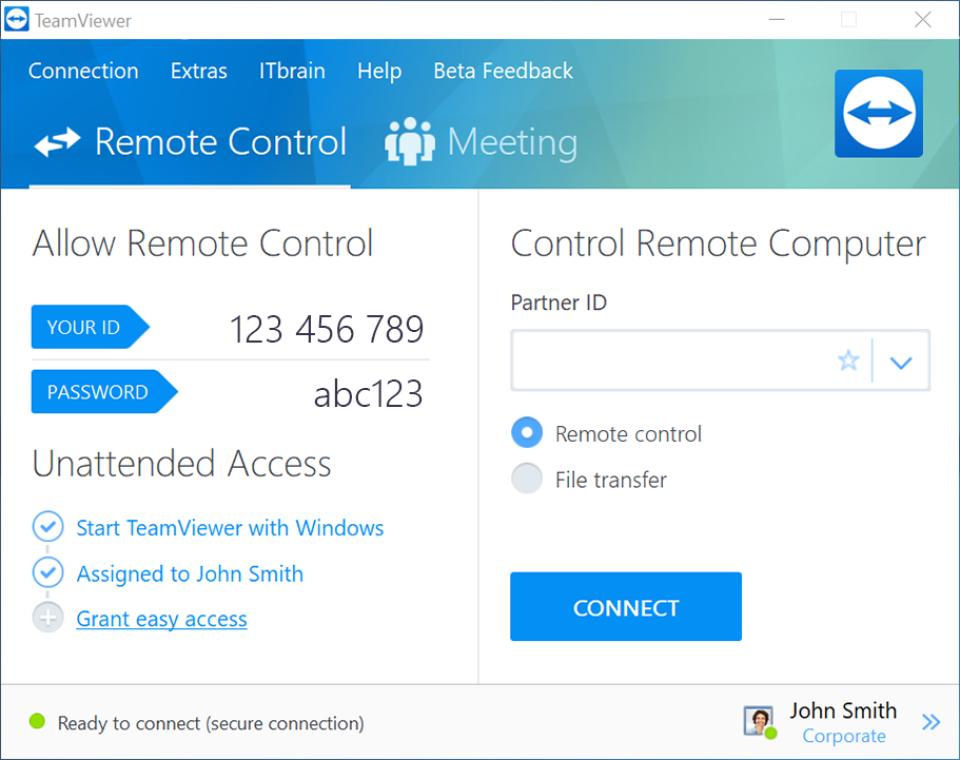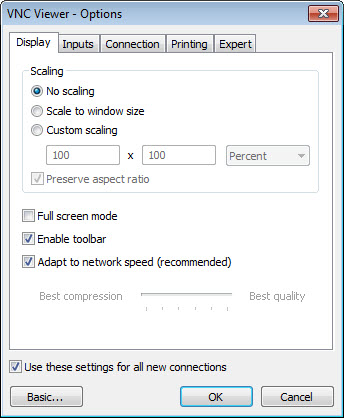

- VNC CONNECT USER REVIEWS INSTALL
- VNC CONNECT USER REVIEWS FULL
- VNC CONNECT USER REVIEWS PASSWORD
- VNC CONNECT USER REVIEWS PC
To the left of the Options is Enter Full Screen click it and the preview window will take over the screen. Hover the mouse at the top of the VNC Viewer window and a menu will drop down from the top of the screen. You can now use this window to control your Raspberry Pi over the network (just as if you were sitting in front of it).

Move the mouse around the window and you’ll see the mouse moving around on your Raspberry Pi.
VNC CONNECT USER REVIEWS PC
Step 4: Remote controlĪ window appears on your Windows PC displaying the Raspbian desktop interface from your Raspberry Pi.
VNC CONNECT USER REVIEWS PASSWORD
Click on Remember Password and then OK to connect to Raspbian. You need to enter the username (typically ‘pi’) and password for your Raspberry Pi. The first time you do this, a window will appear with a warning: ‘VNC has no record of connecting to this VNC Server so its identity cannot be checked’.
VNC CONNECT USER REVIEWS INSTALL
Install and open the software.Įnter the IP address of your Raspberry Pi (the four numbers displayed in VNC Server) into the search bar of VNC Viewer (the part saying ‘Enter a VNC Server address or search’). Head to RealMac ( /hTpNBm) and click Download VNC Viewer. VNC Viewer is available for macOS, Linux, Android, and iOS platforms, along with a web interface. We’re going to use a Windows PC, but you can connect from a Mac, Linux PC, or even another Raspberry Pi on the same network.īecause we’re using VNC Server on Raspberry Pi, it makes sense to use VNC Viewer on the Windows PC. You’re now ready to connect to your Raspberry Pi from another computer. Note down the four numbers they enable you to locate your Raspberry Pi over the network. Your IP (internet protocol) address will appear in the VNC Server Window (below Connectivity). Click OK. A VNC button appears in the top right of the screen, at the end of the menu bar. Now click the Interfaces tab, and set the radio button next to VNC to Enabled. Click the Change Password button and enter a new one. If you haven’t changed Raspbian’s password from the default ‘raspberry’, now is a good time to do so. In Raspbian, click the applications menu icon (raspberry) at the top-left of the screen and select Preferences > Raspberry Pi Configuration. What you'll needįirst, make sure both your Raspberry Pi and the other computer you’re going to use are connected to the same network. In this walkthrough, we’ll be using VNC Viewer and VNC Server to connect on the fly to a Raspberry Pi from a Windows PC and an Android smartphone. Either on your home network, or via the internet. Perhaps you’re using another computer, your Raspberry Pi is out of reach, behind your TV or a nest of cables or you’re on the road and have left your Raspberry Pi at home.įortunately, with VNC (Virtual Network Computing) – free for non-commercial use and built into the Raspbian operating system – you can access Raspberry Pi remotely from any other computer, tablet, or smartphone. As I mentioned, for us RealVNC only has one serious competitor (considering resources vs stability vs cost).There will be times when you can’t - or don’t want to - switch to your Raspberry Pi. Other services that we have tested and considered in general have a huge latency and slowness problem. Important points in our decisions about this: speed and stability, in RealVNC and VNC in general it is constant and depends more on your hardware and network configurations.

This ubiquity of VNC is an enormous weight in decisions whenever we start a project that demands this type of service, precisely because it becomes familiar to our users and collaborators. For access to various services provided on virtual machines, such as Mac Virtual or Cloud VM, VNC is an essential tool already provided with these services. For other intranet tasks, we always use VNC for embedded or free options - as they are occasional non-commercial uses. For example, we use TeamViewer for customer support, but the new RealVNC cloud has similar functionality, possibly we will adopt it next year. There are many options, but remote access depends a lot on the type of task you want to solve.


 0 kommentar(er)
0 kommentar(er)
